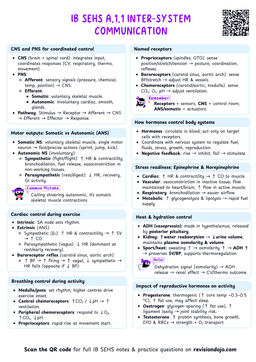Motivational Climate in Sport: Mastery vs. Ego
Analogy- Imagine you're on a sports team.
- Your coach praises your effort and improvement, regardless of the outcome (mastery)
- Now, picture a different scenario: the coach only rewards the top performer, ignoring everyone else (ego)
- These two scenarios illustrate mastery and ego motivational climates.
What is Motivational Climate?
- Motivation influences an individual's decision to engage in physical activities or maintain an active lifestyle.
- Motivational climate refers to the environmental factors shaping an individual’s perception of competence and goal-setting.
- Success can be perceived in two ways:
- Self-improvement and mastery, focusing on effort and personal growth.
- Comparison with others – measuring success based on outperforming peers.
- Can the motivational climate contribute to overtraining?
- Consider:
- Highly competitive motivational environments.
- Pressure to exceed physical limits.
- The significance of rest and recovery.
- Consider:
Mastery Climate: Focus on Growth and Improvement
Mastery Climate
Mastery climates (or task climates) focus on individual improvement and effort-based goals. Emphasize learning, development, and intrinsic motivation. Rewards are based on progress and self-improvement rather than comparison with others.
A mastery climate emphasizes:
- Personal improvement: Success is measured by progress and effort.
- Effort and learning: Mistakes are seen as opportunities to learn.
- Cooperation: Teamwork and mutual support are prioritized.
- A mastery climate aligns with a growth mindset, where individuals believe abilities can be developed through effort and practice.
- Linked to positive experiences such as:
- A positive attitude and high satisfaction
- Low boredom and anxiety
- High self-rated improvement and continued involvement
- Self-determined reasons for participation (intrinsic motivation)
- Linked to positive experiences such as:
Ego Climate: Focus on Winning and Comparison
Performance Climates
Performance climates (or ego climates) prioritize competition and social comparison. Success is measured by outperforming others. Rewards are given based on rank and external achievement, fostering extrinsic motivation.
An ego climate emphasizes:
- Comparison with others: Success is defined by outperforming teammates or opponents.
- Winning at all costs: The outcome is more important than the process.
- Public recognition: Praise is given to top performers, often in front of others.
- Don't assume that an ego climate always leads to poor performance. It can be effective in the short term, but it often comes at the cost of long-term motivation and well-being.
- Associated with negative experiences, including:
- High levels of worry and anxiety
- A focus on comparative ability (competition over personal growth)
- Preoccupation with enhancing social status
The TARGET Approach: Creating a Mastery Climate
- The TARGET framework helps coaches design environments that foster a mastery climate.
- It stands for:
- Task
- Authority
- Recognition
- Grouping
- Evaluation
- Time
- It stands for:
Mastery Climate (Task-Oriented Environment)
- A mastery climate is designed to encourage personal growth, effort, and skill development rather than comparison with others. It aligns with task-oriented success perceptions.
How the TARGET Approach Creates a Mastery Climate
- T (Task): Provide challenging yet achievable skill-based tasks that promote learning and personal improvementrather than just performance outcomes.
- Example: A coach encourages players to develop new techniques rather than focusing solely on game statistics.
- A (Authority): Give athletes some control over their learning process, promoting autonomy and decision-making.
- Example: Allowing athletes to choose drills that target their weaknesses.
- R (Recognition): Reward effort, improvement, and persistence rather than just winning or outperforming teammates.
- Example: Praising a player for mastering a new skill rather than just scoring goals.
- G (Grouping): Use collaborative and inclusive training where athletes of varying skill levels work together to learn.
- Example: Pairing experienced athletes with developing players for skill-sharing.
- E (Evaluation): Assess progress based on self-improvement and individual benchmarks rather than ranking athletes against one another.
- Example: A coach provides individual feedback on technique rather than comparing players’ performances.
- T (Time): Allow sufficient time for practice and learning, avoiding unrealistic pressure to master skills quickly.
- Example: Ensuring long-term development plans instead of short-term result-driven pressure.


